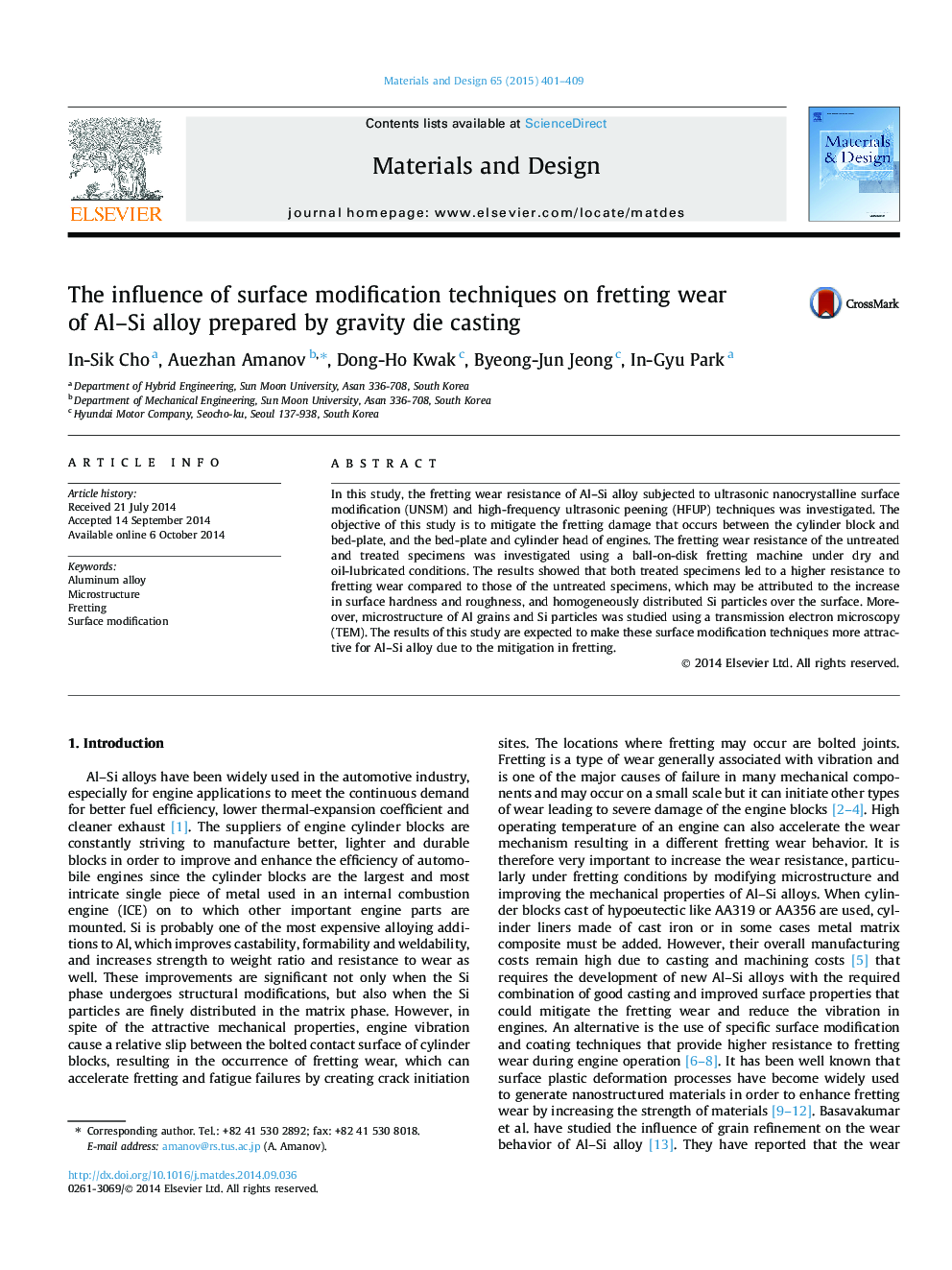| Article ID | Journal | Published Year | Pages | File Type |
|---|---|---|---|---|
| 828820 | Materials & Design (1980-2015) | 2015 | 9 Pages |
•A plastic deformation was introduced by UNSM and HFUP techniques.•Fretting wear of Al–Si alloy was enhanced by both techniques.•The Si particles are homogenously distributed by both techniques.•The results of this work are expected to be implemented to the automotive industry.
In this study, the fretting wear resistance of Al–Si alloy subjected to ultrasonic nanocrystalline surface modification (UNSM) and high-frequency ultrasonic peening (HFUP) techniques was investigated. The objective of this study is to mitigate the fretting damage that occurs between the cylinder block and bed-plate, and the bed-plate and cylinder head of engines. The fretting wear resistance of the untreated and treated specimens was investigated using a ball-on-disk fretting machine under dry and oil-lubricated conditions. The results showed that both treated specimens led to a higher resistance to fretting wear compared to those of the untreated specimens, which may be attributed to the increase in surface hardness and roughness, and homogeneously distributed Si particles over the surface. Moreover, microstructure of Al grains and Si particles was studied using a transmission electron microscopy (TEM). The results of this study are expected to make these surface modification techniques more attractive for Al–Si alloy due to the mitigation in fretting.
Graphical abstractFigure optionsDownload full-size imageDownload as PowerPoint slide
